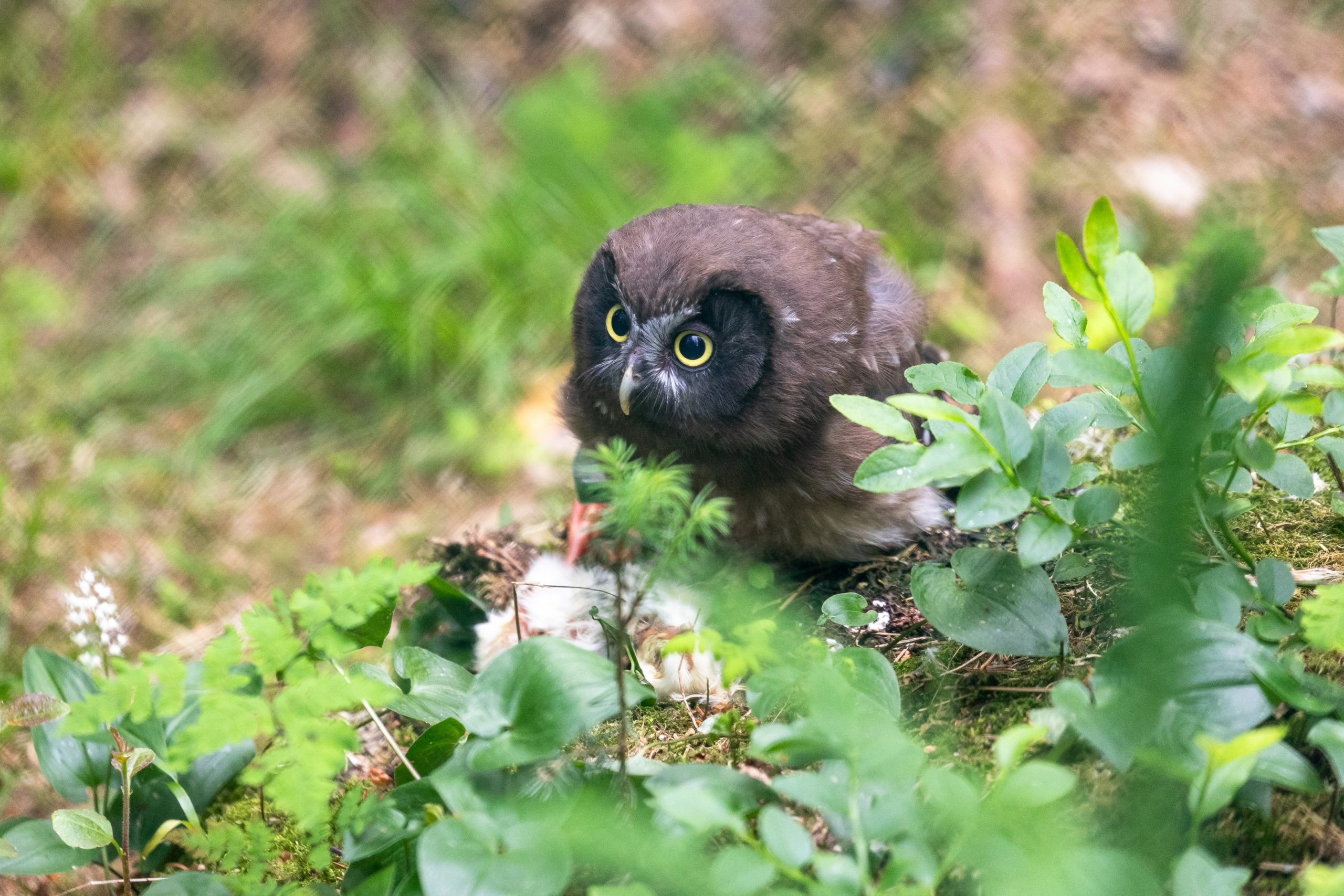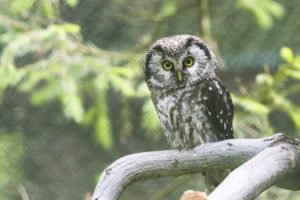
BOREAL OWL
LIVING HABITS
The boreal owl is the most common owl species in Finland, and it nests in all parts of the country except the northest Lapland. It thrives well in spruce-dominant forests, but also approves mixed forests. The boreal owl’s nest is generally in a hollow made by a black wood pecker, but as forestry reduces nesting trees in forest the boreal owl also approves bird houses. Boreal owls are quite devoted to stay in the same area, but females move in wider area in search of food. For food, the boreal owl uses almost exclusively small rodents and other small mammals, as well as birds especially during the winter. The boreal owl has adapted to prey at night, but in winter it is also on the move during the day when it preys on birds.
CONSERVATION
Like all owls in Finland, the boreal owl is a protected species by the nature conservation law.
ADAPTING TO WINTER
When mole populations are low in number, in addition to young boreal owls also females migrate in search of food. The boreal owl can also change its prey from mammals hiding under the snow to birds that are more visible when flying in the air.
BOREAL OWL
Aegolius funereus
Class: Aves – Birds
Order: Strigiformes – Owls
Family: Strigidae – Owls
Size: Weight 90–220 g, wingspan 55-60 cm, females larger than males.
BREEDING: Female lays 4-6 eggs March-April, incubation period: 26-27 days.
LIFESPAN: According to ringing data, the oldest boreal owl has lived to 11 years of age in nature. Oldest in Ranua Wildlife Park lived to 15 years of age.


Did you know…
during the mating display in February-April can you easily spot a boreal owl based on its sound? The male attracts females and announces its territory to other males with its hoot (“pu-pu-pu-pu-pu”) tirelessly from evening to late night. On a quiet spring night, the hooting can carry even a couple of kilometers away.




